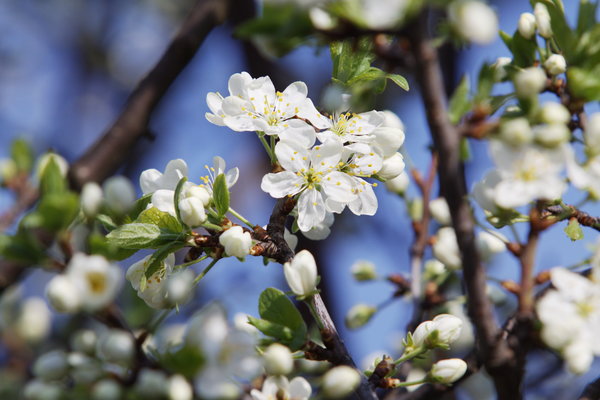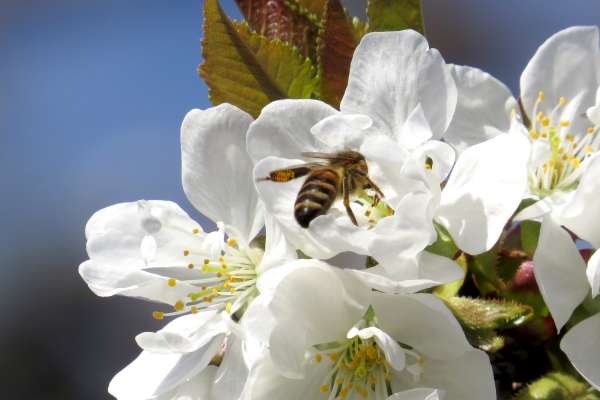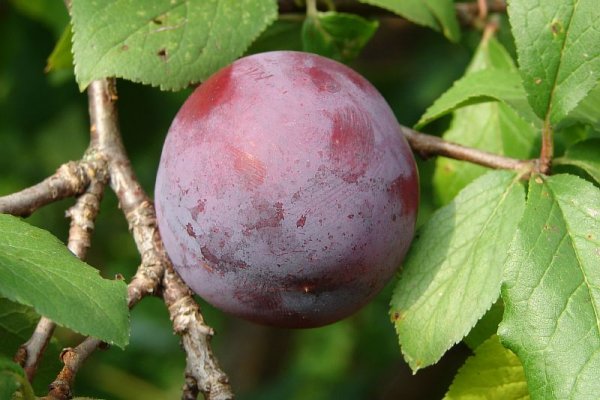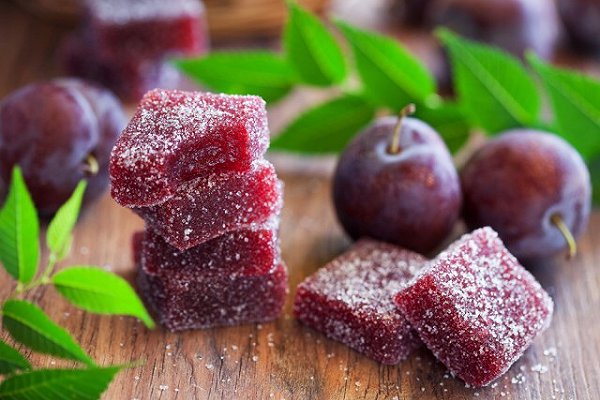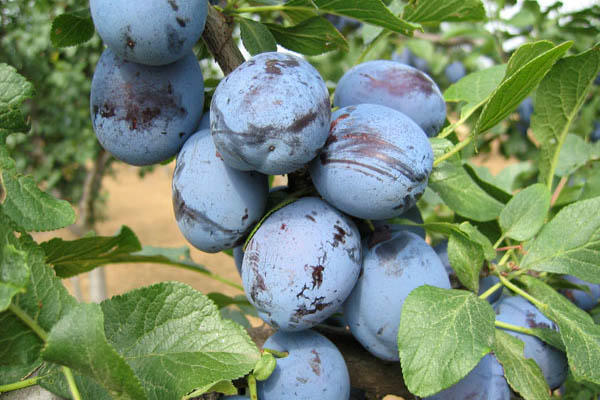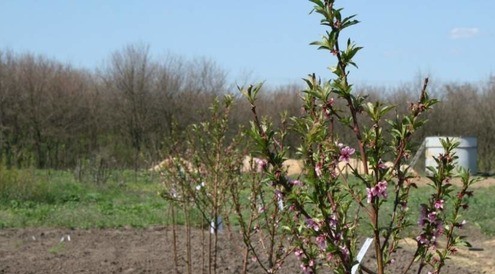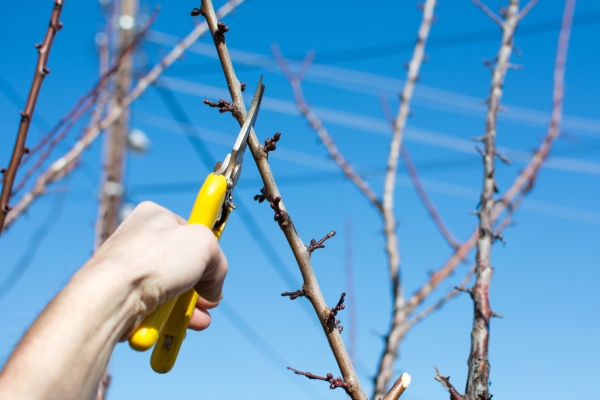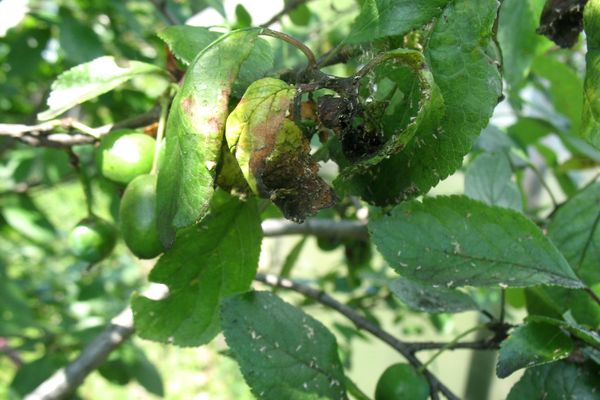Content
The "President" variety has been known for over 100 years. It is most commonly found in Western Europe. It is grown both in ordinary small gardens and in industrial ones. President is a fairly popular variety that has many advantages, ranging from high yields to drought resistance.
Breeding history of the variety
Home plum "President" refers to late ripening fruit trees. It was bred in the 19th century in Great Britain (Hertfordshire).
Since 1901, the popularity of the variety began to skyrocket. Gardeners paid attention to its intensive growth, large number of fruits and the possibility of transportation over long distances. These properties have brought the variety far beyond its "homeland".
Description of the plum variety "President"
"President" plums are medium in size. In most cases, their weight reaches 50 g. There are fruits that are slightly larger (maximum 70 g). They are round in shape with a small depression at the base.
The skin is not thick, smooth. It appears to be covered in wax. Separating the skin and pulp is difficult.
Ripening President plums are usually green, while ripe ones are bright blue, sometimes even purple. Elastic flesh of a yellow-green hue.
Due to the small size of the stalk, the fruits of this variety are easy to pick from the tree.
Each President plum contains a medium-sized stone inside. It is oval with sharp tips on both sides. Pulling it out is pretty easy.
"President" plums are distinguished by excellent taste. Their flesh is tender and very juicy. It is sweet, but sour. 100 g contains 6.12 mg of ascorbic acid and 8.5% of sugars. The juice from it is colorless.
The President plum tree reaches a maximum height of 3 m. It has a round-oval and not very dense crown. At first, the branches grow upward, but after the plum is ready to bear fruit, they take a position parallel to the ground.
The President's leaves have a dark green hue, a round shape and a pointed tip. They are matte and wrinkled. The petioles of the representatives of the variety are small.
The inflorescences of the President plum have two or three flowers. They are large, white, a little like a rose in shape.
Characteristics of the President plum
As mentioned above, the "President" variety is primarily known for its properties and characteristics. There are several of them.
Drought resistance, frost resistance
The plant is not afraid of either drought or frost. It copes well with any bad weather. This was tested in the winter conditions of 1968-1969 and 1978-1979, when the air temperature dropped to -35-40 ° C.
Pollinators
Plums "President" are self-fertile varieties. They do not need additional pollination.
But if other varieties of plums are planted nearby, the yield will increase several times.
The following are used as pollinators:
- plum "Peaceful";
- Early ripening red;
- Stanley;
- grade "Renklod Altana";
- Ternoslum Kuibyshevskaya;
- Amers;
- Vision;
- Hermann;
- Joyo plum;
- Kabardian early;
- Katinka;
- Renclaud of the Temple;
- Rush Geshtetter;
- plum "Rival".
With and without pollinators, the President begins to bloom in mid-May.However, the fruits ripen closer to mid-September. And then, provided that the summer was warm. If the summer months turned out to be cool, the harvest of plums should be expected towards the end of September or even in October.
Productivity and fruiting
The "President" variety plum begins to bear fruit at the age of 5-6 years. Moreover, it does it annually. Ripe fruits keep well on the branches, falling off only if overripe.
But don't rush. Unripe plums of this sort are usually tough, rough and tasteless. They have the same characteristics under unfavorable weather conditions: drought, low air temperature.
Plums of the "President" variety are considered high-yielding. The amount of harvest depends on the age of the plant:
- 6-8 years old - 15-20 kg;
- 9-12 years old - 25-40 kg;
- from 12 years old - up to 70 kg.
Only healthy trees give the maximum amount of plums.
Scope of berries
Plums of this type are used both as an independent product and as part of various dishes. They are used to prepare blanks for the winter, jams, marshmallows, marmalade, compote and even wine.
Disease and pest resistance
The plant of the "President" variety does not have innate protection against any diseases. However, he is not afraid of fungus and scab. Timely feeding and additional treatments will protect against other diseases.
According to information from experienced gardeners, President plums can be affected by moniliosis. The disease usually affects 0.2% of the tree. The plum moth can spoil 0.5% of the area of the entire plant. Gum removal practically does not occur. Pollinated aphids are, to some extent, a threat. However, to cause damage to it, specific conditions for growing plums are needed.
Advantages and disadvantages of the variety
The advantages of the President plum include several points:
- annual bountiful (up to 70 kg) harvest;
- the level of frost resistance of the tree;
- high appreciation of the taste of the plum;
- resistance of the "President" variety to unfavorable weather conditions;
- early maturity (even young plum saplings give fruit);
- good preservation of fruits during transportation.
The President has only two drawbacks:
- from time to time, a tree of this variety needs to be fed, since it has no protection against diseases;
- branches require additional support, because under the weight of the fruit they can break.
Disadvantages can be easily eliminated if the plum is properly looked after.
Planting and caring for President plum
The health, fertility and productivity of a plum tree of this variety depend on many factors. Correct fit is one of them.
Recommended timing
Autumn and spring are considered the ideal time for planting "President" saplings.
Of the autumn months, gardeners prefer the end of September and October. In the spring, it is better to do planting work in March and April. The main thing is that the earth has already thawed and warmed up. The temperature must be at least 12 ° C.
Choosing the right place
There are several requirements for the place where the plum of this variety will grow. The first concerns access to sunlight. The yield depends on their number. And that's not all. It depends on the sun how sweet the plums themselves will be.
The second requirement concerns the space around the tree. He should be free. It is necessary that it is not covered and not shaded by neighboring plants. The abundance of free space will provide air access, which will protect the drain from fungus and high humidity.
Do not forget about the quality of the soil. It should be flat. If necessary, the surface is leveled just before planting. The ideal option for the "President" variety is the soil in which the groundwater is deposited (depth about 2 m).
What crops can or cannot be planted nearby
Plum "President" does not like the neighborhood of any fruit trees, except for the apple tree. In this case, it does not matter what they will be: stone fruit or pome fruit. But shrubs can be planted next to it. The best option is black currant. Gooseberries and raspberries are also good options.
Selection and preparation of planting material
Choosing plum saplings "President" is advised in the fall. It was at this time that they had already shed their foliage, opening up the opportunity to see damaged bark, rotted roots and other imperfections. It is better if it is a specialized nursery or familiar gardeners. The trees purchased in this way are used to the local climate and weather, so it will be easier for them to transfer transportation and disembarkation.
Landing algorithm
The process of planting trees of the "President" variety begins with the preparation of a pit with dimensions of 40-50 by 80 cm (depth and width, respectively). It is necessary to insert a meter stake into it. Its end should be scorched, thereby preventing decay.
Next, you need to take the following actions:
- insert the seedling into the hole so that it stands perpendicular to the ground;
- spread the roots;
- evenly place the ground;
- tie the tree to the stake so that the latter is on the north side;
- water the seedling with 30-40 liters of clean water.
The last step is mulching. The ground around the President plum must be covered with sawdust or dried grass at a distance of 50-80 cm.
Plum follow-up care
The yield and health of the tree as a whole directly depends on the correct care of it. It includes several points:
- watering;
- top dressing;
- pruning;
- rodent protection;
- preparing the tree for the winter period.
There are no special instructions regarding watering, as the plum of the "President" variety is able to withstand even high temperatures. In view of this, it is enough to water it a couple of times a month. The volume of water is about 40 liters.
In the second half of summer, the amount of water should be reduced. This will help slow down the growth of the plum after it has been harvested.
Top dressing of trees "President" is carried out in spring and autumn. The substances used differ depending on the age of the plant:
- 2-5 years - 20 g of urea or 20 g of nitrate per 1m2;
- from 5 years in the spring of 10 kg of compost / manure, 25 g of urea, 60 g of superphosphate, 20 g of potassium chloride;
- from 5 years in the fall - 70-80 g of superphosphate, 30-45 g of potassium salt, 0.3-0.4 kg of wood ash.
After spring top dressing, the soil must be loosened 8 cm deep, and in the fall, using a pitchfork, dig it up by 20 cm.
In the care of the President plum, 3 types of pruning are carried out. In the first few years, it is formative. The branches must be cut by 15-20 cm so that by the third year a 2-tier crown is formed.
After the crop has been harvested, the plum needs to be pruned to rejuvenate. It affects mature or too dense trees. The central shoot should be reduced by a third of the length, and the lateral ones by two-thirds.
Sanitary pruning of “President” plums should be carried out as needed.
With rodent protection, the situation is a little more complicated. In winter, hares can eat branches, and field mice can eat the root system. There are several ways to prevent tree damage.
The first method is familiar to everyone. This is the whitewashing of the tree in the fall. The bark becomes bitter and no longer attracts pests as well.
Whitewashing can be replaced with glass wool or roofing felt. Reeds, pine branches, or junipers are also suitable. They need to be left until March.
A fence made of fine metal mesh will also provide good protection. It will protect the plum from large rodents.
It should be noted that whitewashing is the main stage in preparing the President plum for winter. It will not only protect it from rodents and harmful insects, but also prevent debate.
Diseases and pests, methods of control and prevention
Of the serious diseases that can affect the plum, moniliosis, dwarfism and gum flow are distinguished.In case of moniliosis, the tree should be sprayed with a 3% solution of a special preparation "Horus". Enough 3-4 liters for 1 plant. Plum affected by dwarfism must be burned.
It is much easier to deal with gum disease. It is enough to carry out all the prescribed feeding on time.
Of the pests, the most dangerous for the tree are pollinated aphids, shoot moths and plum moths. Dealing with them is easy.
Pollinated aphids are afraid of mineral oil preparations, for example, copper sulfate. Coniferous concentrate (4 tablespoons per 10 liters of water), 0.3% solution of Karbofos (3-4 liters per plant) will cope with the moth. Chlorophos will help get rid of moths. The drug is applied to the tree in the spring during the budding period.
To prevent the President plum from being damaged by pests, several preventive measures must be taken:
- loosen the ground in early autumn;
- remove old bark from the tree;
- cut off damaged branches;
- do not forget to destroy the carrion;
- remove root shoots;
- to clear the near-trunk circle from fallen leaves and branches;
- with the onset of summer, loosen the soil between the rows of plums and in the trunk circle.
And, of course, we must not forget about whitewashing.
Plum of the "President" variety is known for its excellent taste and undemanding qualities. It grows well in all weather and climatic conditions. This is its main advantage. The main thing is to take all the necessary protective and preventive measures on time. Only in this case, you can count on good yield and fertility.


